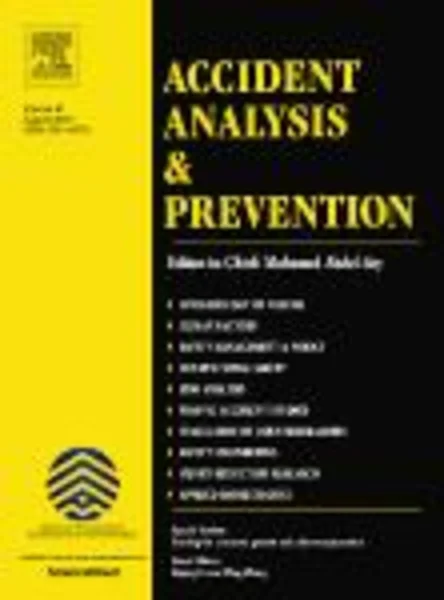-
distracted driving in elderly and middle-aged drivers
جزئیات بیشتر مقاله- تاریخ ارائه: 1392/01/01
- تاریخ انتشار در تی پی بین: 1392/01/01
- تعداد بازدید: 933
- تعداد پرسش و پاسخ ها: 0
- شماره تماس دبیرخانه رویداد: -
automobile driving is a safety-critical real-world example of multitasking. a variety of roadway and in-vehicle distracter tasks create information processing loads that compete for the neural resources needed to drive safely. drivers with mind and brain aging may be particularly susceptible to distraction due to waning cognitive resources and control over attention. this study examined distracted driving performance in an instrumented vehicle (iv) in 86 elderly (mean = 72.5 years, sd = 5.0 years) and 51 middle-aged drivers (mean = 53.7 years, sd = 9.3 year) under a concurrent auditory–verbal processing load created by the paced auditory serial addition task (pasat). compared to baseline (no-task) driving performance, distraction was associated with reduced steering control in both groups, with middle-aged drivers showing a greater increase in steering variability. the elderly drove slower and showed decreased speed variability during distraction compared to middle-aged drivers. they also tended to “freeze up”, spending significantly more time holding the gas pedal steady, another tactic that may mitigate time pressured integration and control of information, thereby freeing mental resources to maintain situation awareness. while 39% of elderly and 43% of middle-aged drivers committed significantly more driving safety errors during distraction, 28% and 18%, respectively, actually improved, compatible with allocation of attention resources to safety critical tasks under a cognitive load.
مقالات جدیدترین رویدادها
-
استفاده از تحلیل اهمیت-عملکرد در ارائه الگوی مدیریت خلاقیت سازمانی و ارائه راهکار جهت بهبود
-
بررسی تاثیر ارزش وجوه نقد مازاد بر ساختار سرمایه شرکت های پذیرفته شده در بورس اوراق بهادار تهران
-
بررسی تأثیر سطح افشای ریسک بر قرارداد بدهی شرکت های پذیرفته شده در بورس اوراق بهادار تهران
-
بررسی تأثیر رتبه بندی اعتباری مبتنی بر مدل امتیاز بازار نوظهور بر نقد شوندگی سهام با تأکید بر خصوصی سازی شرکت ها
-
تأثیر آمیخته بازاریابی پوشاک ایرانی بر تصویر ذهنی مشتری پوشاک ایرانی (هاکوپیان)
-
قیمت دهی بهینه هاب های انرژی صنعتی برای شرکت در برنامه های پاسخگویی بار
-
کاربرد هندسه در ترسیم رادیکال ها
-
استحصال انرژی امواج ناشی از باد در منطقه چابهار
-
بهینه سازی و کنترل فرایندهای تخمیر فدبچ با استفاده از مدل
-
infuence of nano and microscale surface porosities on particles flotation
مقالات جدیدترین ژورنال ها
-
مدیریت و بررسی افسردگی دانش آموزان دختر مقطع متوسطه دوم در دروان کرونا در شهرستان دزفول
-
مدیریت و بررسی خرد سیاسی در اندیشه ی فردوسی در ادب ایران
-
واکاوی و مدیریت توصیفی قلمدان(جاکلیدی)ضریح در موزه آستان قدس رضوی
-
بررسی تاثیر خلاقیت، دانش و انگیزه کارکنان بر پیشنهادات نوآورانه کارکنان ( مورد مطالعه: هتل های 3 و 4 ستاره استان کرمان)
-
بررسی تاثیر کیفیت سیستم های اطلاعاتی بر تصمیم گیری موفق در شرکتهای تولیدی استان اصفهان (مورد مطالعه: مدیران شرکتهای تولیدی استان اصفهان)
-
جریان شناسی سیاسی-فکری عصر امام هادی (علیه السلام)
-
رمز ارزها، چالش ها و جرایم پیرامون آن
-
آنالیز و تحلیل پیستون موتورهای بنزینی با استفاده از سیمولیشن حرارتی نرم افزار سالیدورک
-
نقد و واکاوی کتاب ماهیت هنر و تزئینات در معماری داخلی (طراحی و دکوراسیون) از مجموعه آثار معمار دبدبه
-
بررسی تاثیر مشتری محوری بر جذب مشتریان با در نظر گرفتن نقش کیفیت خدمات در نظام بانکداری




سوال خود را در مورد این مقاله مطرح نمایید :